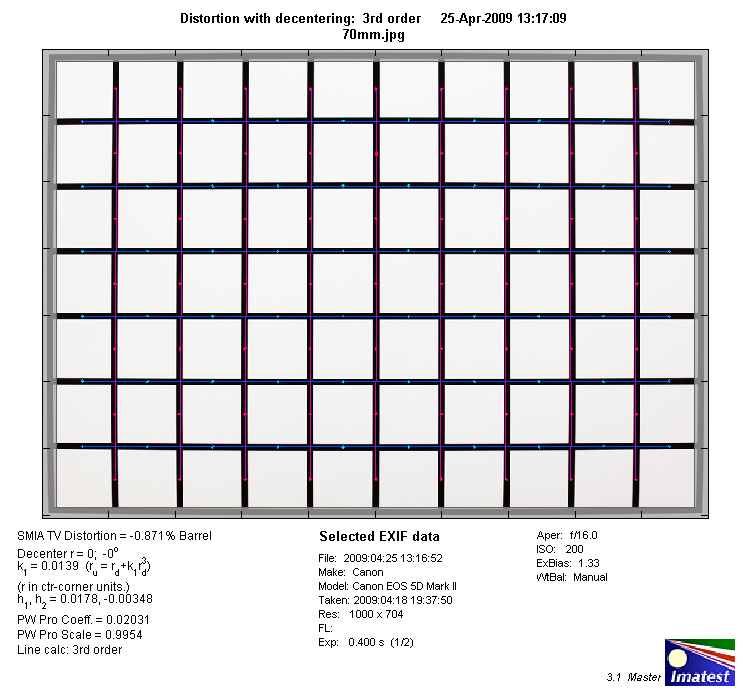|
Canon EF 70-200mm f/4 USM L IS (full format) - Review / Test Report - Analysis |
|
Lens Reviews -
Canon EOS (Full Format)
|
|
Page 2 of 3

Distortion
The Canon EF 70-200mm f/4 USM L IS does a good job with respect to distortion but the situation is still a little worse compared to prime lenses. The Canon lens produces a slight degree of barrel distortion at 70mm, slight pincushion distortion at 135mm and moderate pincushion distortion at 200mm. The latter may be visible in very critical field situations.
|
Move the mouse cursor over the focal length text marks below to observe the respective distortion
|
| 70mm |
135mm |
200mm |
|

|
Vignetting
Vignetting is a critical topic for most lenses when used on full format DSLRs but, surprisingly, it's not a major issue with the EF 70-200mm. The problem is still visible at around 1EV at max. aperture but this comparatively moderate compared to the 1.5-3EV that we've seen recently in other tests. The vignetting is basically negligible from f/5.6 onwards.

MTF (resolution)
The EF 70-200mm f/4 USM L IS is already one of the very best (possibly _the_ best) tested zoom lenses in the APS-C scope and there're no doubts that the same will be true on the full format. The center resolution is excellent from f/4 to f/8 throughout the tested focal lengths and only diffraction effects limit it to very good figures at f/11. The border and corner performance is also very good. This is amazing for a zoom lens.
Please note that the MTF results are not directly comparable across the different systems!
Below is a simplified summary of the formal findings. The chart shows line widths per picture height (LW/PH) which can be taken as a measure for sharpness.
If you want to know more about the MTF50 figures you may check out the corresponding Imatest Explanations
Chromatic Aberrations
The lens does also manage to show an excellent behavior regarding lateral chromatic aberrations (color
shadows at harsh light transitions) which peak around 0.9 pixels on the average at the image borders. This is usually nothing to worry about in field conditions.

Bokeh
Due to its relatively slow max of aperture of f/4 the Canon lens has not the very best potential with respect to the bokeh - it's naturally somewhat underdeveloped compared to its f/2.8 cousins or the fast prime lenses in this range. That said it's still a decent performer here at least at 200mm where we tested this characteristic more formally. Out-of-focus highlights have a basically perfect circular shape at f/4 and f/5.6 and there's only a minimal tendency towards outlining here. This is true for most of the image frame but in the image corners the circular shape is somewhat "cut" as you can see below (this is not unusual). The quality of the blur is very good although not on the same level like e.g. the EF 135mm f/2 USM L which may serve as a top quality reference lens here.

|